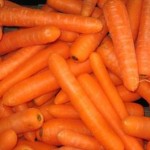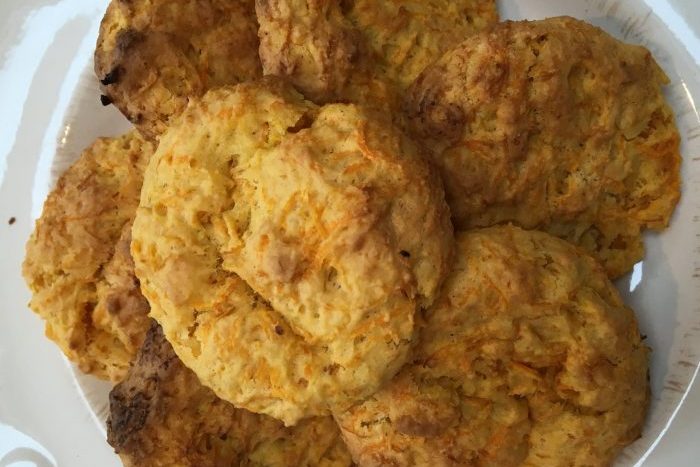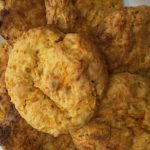Carrots were an important vegetable during World War II. Packed with vitamins and minerals, naturally sweet, and easy to grow in the garden; they replaced much of the sugar in many British war time recipes.
This recipe for War Time Carrot Cookies is a winner, and perfect for celebrating VE day. You could also try substituting the vanilla extract for almond or orange flavouring, or some orange zest.
Skills Check
Follow a recipe; follow food safety and hygiene rules; tidy away; use a timer; cream fat and sugar; scrape out a bowl with a spatula; use measuring spoons and cups; use a vegetable peeler safely; use a box grater safely; use the oven (with adult supervision).
Equipment
Baking tray, Greaseproof paper, Measuring spoons, Mixing bowl, Wooden spoon, Box Greater, Tablespoon.
Allergens (Please note the allergens listed are indicative only. Allergens vary depending on brand; check the labels on the products you use)
Gluten | Milk
Ingredients (makes 6 biscuits):
- 2 tbsp margarine
- 4 tbsp sugar
- Few drops of vanilla extract
- 8 tbsp grated raw carrot
- 12 tbsp self-raising flour
Method
- Preheat the oven to 200°C/Gas Mark 7.
Line a baking tray with grease proof paper. - Mix the margarine and sugar together until light and fluffy.
- Beat in the vanilla extract and grated carrot.
- Gently stir in the flour.
- Drop spoonfuls of the mixture onto the baking tray.
- Bake in the oven for 18-20 minutes.
So thinking about carrot cookies ...

Biscuits/Cookies tend to be high in fat and sugar, although some types are worse than others. The Eatwell Guide says that if you are consuming food and drinks high in fat, salt and sugar we should have these less often and in small amounts.
Nutritional Information
| Energy | 537kJ/127kcal | 6% | |
| Med | Fat | 3.2g | 5% |
| Med | Saturates | 0.7g | 4% |
| Med | Sugars | 8.3g | 9% |
| Low | Salt | 0.11g | 2% |
per 38g serving
% of an adult's reference intake
Typical values per 100g: Energy 1413kJ / 335kcal
Notes
A traffic light system is used on nutrition labels to make it easier to see which foods and drinks are lower in calories, fat, sugar and salt. Try and choose more ‘greens’ and ‘ambers’ and fewer ‘reds’, and stick to smaller portions of ‘reds’.
Just because a recipe or a food has a red traffic light doesn’t mean you shouldn’t eat it. Understanding why a food or recipe might have a red light can be helpful. For example oily fish is high in total fat and so any recipe containing oily fish is likely to be ‘red’ for fat. But it is recommended that we eat oily fish at least once a week because the type of fat it contains is beneficial for our health.
% Reference Intakes are also shown. Reference Intakes are guidelines about the approximate amount of particular nutrients and energy required for a healthy diet (based on an average-sized woman doing an average amount of physical activity). Most children will require less than these Reference Intakes. The contribution of one serving of a food or drink to the Reference Intake for each nutrient is expressed as a percentage.




